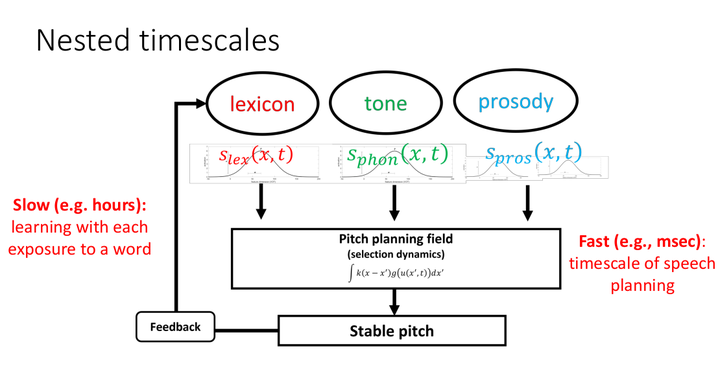
Abstract
Recent work has shown that lexical items come to take on the phonetic characteristics of the prosodic environments in which they are typically produced, a phenomenon referred to as “leaky prosody”. Focusing on pitch patterns in Mandarin, we show that leaky prosody can be derived from a flat (i.e., non-transformational, non-optimizing) model of speech production. Formalized using Dynamic Field Theory, in our model, lexical, phonological, and prosodic inputs each exert forces on a Dynamic Neural Field representing pitch. Notably, the forces exerted by these inputs reflect surface distributions in a large corpus of spontaneous speech. Our simulations showed that the flat model derives the short timescale effect of prosodic prominence on pitch production as well as the longer timescale effect of leaky prosody. By updating lexical items based on surface phonetic form, words that are consistently produced in high/low prosodic prominence positions take on the phonetic characteristics of those environments.